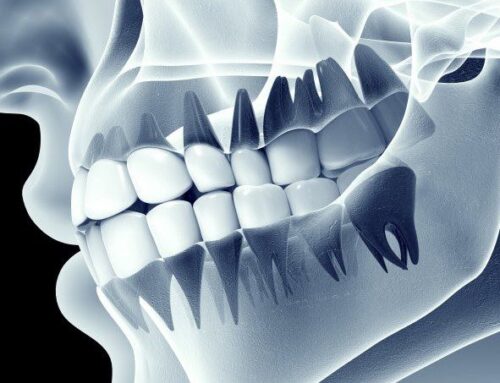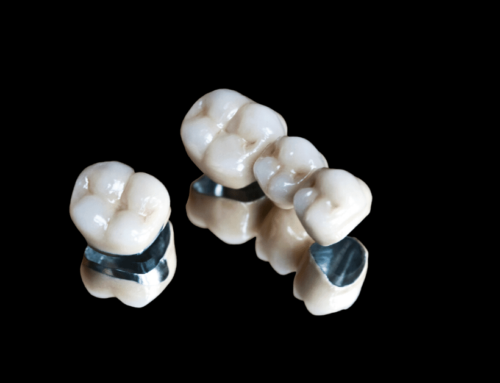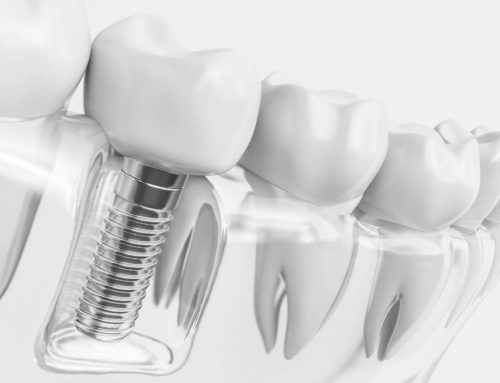Fixing and Repairing Damaged Teeth with Dental Inlays and Dental Onlays
There are many different treatments available that can improve the look of your smile and restore teeth, but what’s the difference between them and why would you choose one over the others? Here, we will review various tooth restoration treatments like dental inlays and dental onlays, and explain why and when they are used to repair teeth that have become damaged.
With so many options for dental procedures to help keep your smile in style, it’s important to learn more about them so that you can make the best choices when it comes to your dental health. For instance, in the area of cosmetic dentistry alone, there are several effective ways to restore the appearance of teeth that have become damaged due to tooth decay or accidental impacts. These procedures can include dental inlays, dental onlays, dental veneers, tooth whitening, and more. However, each cosmetic dental treatment has unique benefits that make them best suited to solving a specific type of tooth problem.
As you look to better understand the differences between various cosmetic dental treatments, knowing how each one works and in which situations they are best suited can help inform your decisions on the dental care you opt to receive. We’re going to take a closer look at some of the most common and popular cosmetic dental treatments used to restore teeth, and explain the types of situations when they are the best option to achieve the optimum outcome. But first, let’s consider why teeth may eventually require a restoration treatment to help maintain your smile and improve your state of dental health.
What Are Dental Inlays?
Dental inlays are in essence a type of tooth filling. However, rather than being a moldable amalgam material that is then shaped to fit and then hardened to fill the tooth cavity, dental inlays are pre-formed and affixed into deep grooves and surface cavities on the sides of teeth. After the surface of the tooth with the cavity is cleaned and prepared, the inlay is bonded to the tooth using a permanent dental adhesive. Dental inlays are most often used to fix cavities located on areas of the teeth that are not prominently visible, such as on the back teeth, side teeth, and on the interior surfaces.
How Are Dental Inlays Different from Dental Veneers?
Dental inlays and dental veneers are similar only in that they are applied to the flat surfaces of the teeth and adhered using a permanent dental bonding material. This is where the similarities end. Rather than small pre-molded fillings, dental veneers are single-piece porcelain laminates that entirely cover the visible outer surface of a tooth. As such, veneers are best suited to addressing the problem of advanced discoloration and cosmetic irregularities on the outward-facing surfaces of the teeth.
What Are Dental Onlays?
Dental onlays are very similar in form and function to inlays, but are used to repair cavities that are on the biting surfaces of the teeth, and can include portions of the crown and cusps. Like inlays, the affected area of the tooth is cleaned and prepared before the onlay is permanently bonded in place. Onlays are most often used for tooth repairs that are bigger than what can be done using moldable amalgam fillings. This is because amalgam material is best suited to filling small indentations in teeth, and in larger amounts does not have the inherent structural strength to withstand the frequent and recurring pressure of biting. Since dental onlays are constructed of a solid formed piece of dental composite, they are much more resistant to pressure and are ideal for repairs where the teeth come together on the patient’s bite pattern.
How Are Dental Onlays Different from Dental Crowns?
Dental onlays replace a portion of the biting surface of the tooth, whereas dental crowns are used when the entire top surface of the tooth is damaged and must be replaced. In addition, dental crowns require a much more substantial reduction and reshaping of the existing natural tooth. This is to ensure the greatest strength in the bond between the artificial crown and the natural tooth base, restoring maximum mouth function for the patient.
Post-Treatment Care of Dental Inlays and Dental Onlays
Many patients who need a dental inlay or dental onlay are curious what special care may be needed in order to keep the repaired tooth healthy and retain its strength. This is valuable information to make sure that the patient gets the best possible outcome from their onlay or inlay treatment, and also to help elevate their overall state of dental health.
Immediately following the inlay or onlay treatment, it is generally recommended to avoid foods and drinks that are either very hot or very cold. Teeth can be very sensitive after the treatment. Although these effects are usually only temporary, some patients experience heightened sensitivity to temperatures on the repaired tooth. Use of a special toothpaste to reduce sensitivity can help alleviate this for most people who experience these effects.
Normal oral health care routines can be resumed following the procedure. Regular toothbrushing, flossing, and rinsing with antibacterial mouthwashes are all important parts of an at-home oral hygiene regimen. Being diligent with these habits will keep your mouth, teeth, and gums as healthy as possible in between dental checkups. At each checkup following the inlay or onlay treatment, your dentist and hygienist will closely inspect the repaired tooth to monitor the results.
When Do Teeth Need Restorative Dental Treatments?
It may not be easy to see when looking at your teeth in the mirror, but there are small grooves that run up and down in the surface enamel of our teeth. Sometimes, these grooves are more pronounced on some teeth than others. In these surface grooves, it is possible that cavities can form which will increase the depth of the grooves. This can create visible irregularities on the teeth, and if left untreated can progress to more advanced stages of tooth decay. It is important to fill in and repair these deep grooves to prevent further decay and reinforce the strength of the teeth
Over time, teeth can also experience a gradual discoloration as the enamel becomes stained. This can occur due to exposure to certain types of foods and drinks, but it can also be caused by lifestyle factors such as tobacco use or improper oral hygiene. If allowed to progress unchecked, this discoloration will eventually worsen, causing teeth to take on an unsightly yellowish or brownish hue. Whitening treatments are able to correct most minor cases of tooth staining, but in more extreme cases of tooth discolouration a different approach may be necessary.
To fix these types of tooth problems, most dentists will recommend simple restorative procedures. Depending on the exact nature of the problem, they may suggest treatments such as dental inlays, dental onlays, dental crowns, and dental veneers. Let’s examine each one of these treatments in more detail to explain which circumstances call for them to be used.
Find Out If a Dental Inlay or Dental Onlay Is Right for You
Although we’ve covered the most common scenarios where dental inlays and onlays may be recommended, there are many other factors that may play a role in determining the best treatment for your specific condition. In order to definitively say which option is the right approach for you, a consultation and examination is required. This process may include obtaining an up-to-date set of dental x-rays and digital imaging scans of your mouth. Doing this provides the greatest level of detail for your dentist to accurately evaluate your condition and formulate an effective treatment plan to deliver the best possible results.
To get things started, contact Georgian Dental today to arrange for your examination and consultation. We will conduct a comprehensive review of your dental health history, examine your teeth and mouth, and provide our recommendations on the best course of action. Our goal is always to ensure that you obtain the optimum outcome from any treatment you receive here at our dental clinic, so we will provide all the details on your available treatment options so you are fully informed before proceeding ahead. Whatever questions or concerns you may have, we will endeavor to clearly answer them all to your complete satisfaction.
There’s no time like the present to improve your oral health and repair tooth imperfections with restorative dental treatments like dental inlays and dental onlays. Book an appointment now to get started & talk with our friendly team of dentists and dental hygienists.
Free Initial Consultation
Free consultations for all dental implants, bridges & crowns, braces, gum recession and full mouth reconstructions ($300 Value).
Contact us to book your appointment today.










